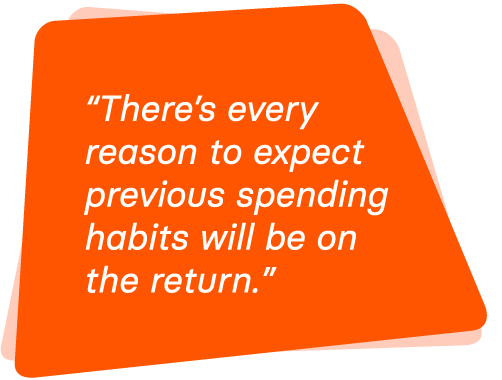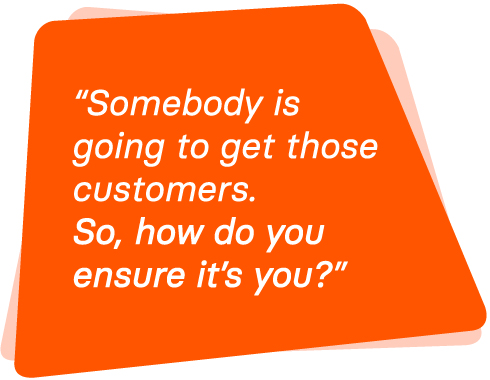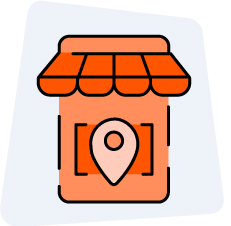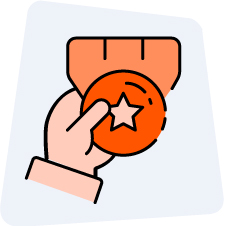The Current State of Retail: Have We Started to Recover?
There’s no question that 2020 was a rough year for the retail sector. While the long-term effects of the pandemic – for individuals and for society – may not be fully known for years, the toll it took on the economy in general, and retail specifically, was immediately apparent. Let’s take a look at the current state of retail and what the future holds.
In April 2020, just a month into the pandemic, you couldn’t avoid the dire headlines about the drop in retail sales. According to CNBC, March of last year saw retail sales collapse by 8.7%, “the biggest decline since the government started tracking the series in 1992.”
After nearly a year of disheartening economic news, though, there is reason to believe the tide is turning. In the US, the first good signs came in March when, spurred on by a fresh round of stimulus checks, overall retail spending skyrocketed from the month before. April saw a similar boast in sales in the UK following the end of many strict lockdown measures. While you’ve likely seen recent reports that retail sales in both the US and the UK dropped in May, at least part of that was driven by the change in meal venues: as people ate out more in restaurants, people bought fewer groceries.
All of that is to say, if you’re a retailer, there is good reason to be optimistic about the months ahead. There’s no question that the pandemic is still with us, but as vaccines drive down the number of infections and local and federal governments ease restrictions, it’s clear people are ready to get out there and spend again.
Retail and Food Service Sales
On June 16, the US Census Bureau released its June 2021 Advance Monthly Retail report. As the name suggests, this is the agency’s regular report on how retail sales are doing in the country. The report is based on surveys of a random sampling of 5,500 retail and food service firms, and as such, is only an estimate. But it’s a historically accurate and useful estimate.
The full report is divided into over a dozen different business types – which are, themselves, broken down into even smaller categories – meaning that there is a lot of data. It’s no wonder, then, that news outlets have chosen to highlight the 1.3% decline in overall sales from April. It’s a straightforward data point that is easily understood. As we should all know by now, though, headlines never tell the full story.
For instance, while the report does, indeed, state that sales for both retail and food services declined from April 2021, it also points out that in comparison to May 2020, May 2021 saw an increase of just over 28%. The period from March to May of this year was up a whopping 36% from the same period in 2020. Also, last month’s report originally found that sales in April 2021 were “virtually unchanged”, but the newer report revises that estimate up to a nearly 1% increase. That suggests this May estimate could also be revised up when the real numbers come out later in the summer.
The End of the Pandemic
Now, you might be saying, “Well, sure, sales are better than this time last year, that was the beginning of the pandemic!” But that’s the point: the pandemic is coming to an end, and with that, so does the decline in sales. Unlike the complex and confusingly intertwined economic issues that caused the 2008 recession, for instance, the root cause of this economic downturn is plain: people were stuck at home. Even in places where governments weren’t enforcing lockdowns and restrictions, fear of the virus and a general uncertainty about the future kept people from going out and spending money. As that fear dissipates and the uncertainty lessens, customers are going to feel freer to open their wallets again.

That’s not just mere speculation. While most business categories did experience a decline from April to May, according to the Census Bureau’s report, not all of them did. In May, sales at clothing and clothing accessories stores not only improved in April, they also bested March. The same trend can be seen for food services and drinking places. While those are just two data points out of many, they illustrate something very important for the retail sector: people are socializing again (hence the new outfits). When people socialize, they spend money.
It might take a few months for every retail business sector to see consistent growth, but by the time this year’s holiday shopping period is upon us, there’s every reason to expect previous spending habits will be on the return.
Ensuring Your Own Recovery
Which is nice and all, but it only translates to personal success if you take advantage of the moment.
Even if you had a booming business prior to the pandemic, with loyal customers and great foot traffic, you can’t just assume everything is going to return to the status quo once people are fully out and about again. Habits were broken, new habits were created; many people are taking stock of their personal and financial situations to determine what really matters to them.

Whether you sell essential goods, leisure items, or niche products, you have two market forces working against you: the perennial difficulty of attracting customers – new and old – to your location(s), and direct competition from other retailers who are going to be doing everything they can to win new customers. For all practical purposes, even for companies that have been in business for decades, everyone is starting at square one.
Somebody is going to get those customers. So, how do you ensure it’s you?
Your Online Presence
Undoubtedly, the last year and a half has emphasized for you the importance of having an online presence. It’s no longer enough to just have a website with basic info about store hours and your products, you need to be active and engaged through multiple platforms. Even if most (or all) of your business is done in a physical location, a strong web presence is invaluable.
While COVID-19 might have accelerated this trend, the reality is that the future of retail (even in-store retail) is online. People live their lives as much on the Internet as they do in the physical world, and if you want their physical money, you’re going to need their digital attention.


1. Maintain your online presence
The key to ensuring your various digital outlets – websites, Facebook, Google, etc. – are working at their full potential is by maintaining your online presence. You need to be active on these platforms, engaging with your customers where they are.
You also need to be consistent. Too many business owners focus on only one platform or another, perhaps because they’ve assessed that most of their traffic comes from that particular site. But even if your traffic is mostly driven by Facebook, for example, neglecting your other platforms is a huge mistake.
If someone doesn’t feel confident that your online information is correct, they aren’t going to waste their precious time visiting your physical location. This issue is only compounded when you have multiple stores with different hours and different stock supplies.
That is where Localistico comes in. Our bulk editor allows you to manage your online presence with a few simple clicks. It doesn’t matter how many locations you have, once your personal dashboard is set up, keeping your information up to date will never take more than a few minutes. It will allow you to have more control over your online presence without having to devote valuable time or personnel resources to it.
But that’s only the first step.

2. Convert your online presence into real-world traffic
Having a strong online presence is essential for any type of business these days, but it means nothing if it can’t be converted into traffic for your stores.
Keep in mind, as the recovery continues, your competitors are going to be doing everything they can to attract customers, just like you. What that will likely translate to is a deluge of advertisements promoting big sales and in-store events. Unfortunately, what that will translate to for the average consumer is a wall of noise. If you want to get someone’s attention amidst that cacophony, you need to stand out. You need to be hyper-relevant. The most effective way to accomplish that is through local promotions.
Local promotions can take multiple forms, but what they all have in common is targeting specific content to specific customers based on their location. That can be a store-specific sale that’s going on, a special event that is being hosted at one location, or even just a friendly reminder that you’re in the neighbourhood and open for business. This type of localized outreach is a fantastic and effective way of gently prodding both existing and potential customers to check out your stores.
Whether its local ads, Google Posts, or Facebook Posts, Localistico can help you create, organize, and update your promotions without hassle and with precision. While your competitors are using the equivalent of a paint sprayer, hoping to cover the most area as possible, you’ll be using a fine-bristle paintbrush, carefully targeting all the right spots.

3. Manage your reputation online
Once you’ve gotten customers to come back to your store, you need to convert that into positive buzz online. Research indicates that the era of COVID-19 has only made consumers more reliant on store reviews and product feedback.
Lots of store and business owners hate customer reviews. After all, it just takes one disgruntled customer to torpedo your reputation, and it might not have even had anything to do with you. One person’s bad day could translate into months of reputation rehabilitation.
It doesn’t have to, though, so long as you stay on top of it. That’s one more way in which Localistico can help you manage your online presence and have greater control over your reputation. With your centralised inbox and review organizer, you can quickly and consistently respond to reviews across all manner of platforms, from Google to Yelp and everything in between.
You can read more about reputation management and why it matters at this blog.
More Than Just a Recovery
There’s a common expression: “A rising tide lifts all boats.” In economic terms, that means that when the economy experiences a recovery, most businesses do at least a little better as well, even with no effort.
So, you can certainly sit back and wait for the broader economic recovery to lift you up. You might even return to pre-pandemic levels of customer support, assuming you have the right business model and a little bit of luck. Or, you could take advantage of this moment to grow your business and build an even bigger customer base.
Whether you operate restaurants, clothing shops, hardware stores, car dealerships, or any other type of retail business, you are facing a prime opportunity. People want to go out, they want to spend money, they want to have new experiences and buy new things.
Position yourself as the business in your area for experiencing the post-pandemic renaissance, and you won’t just recover; you’ll thrive.
